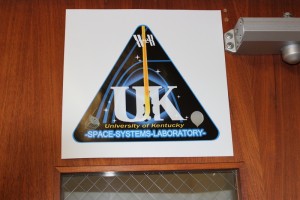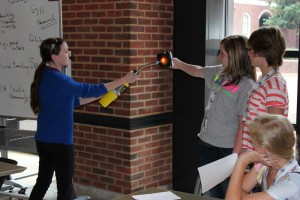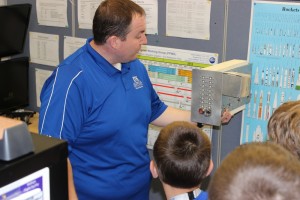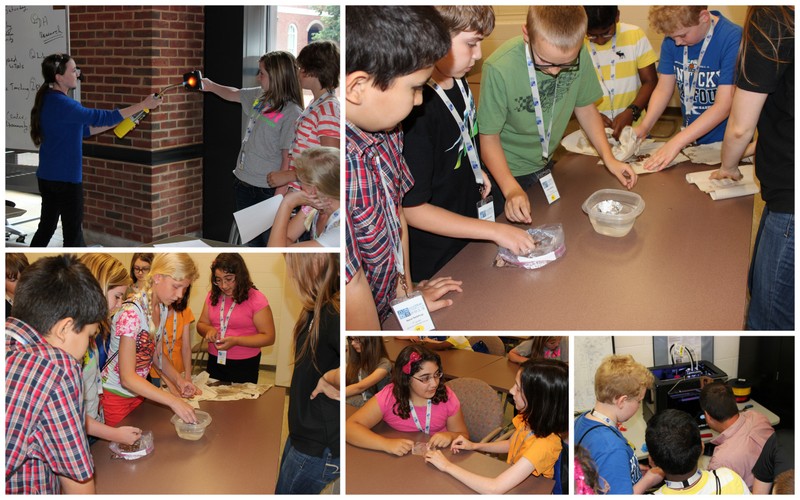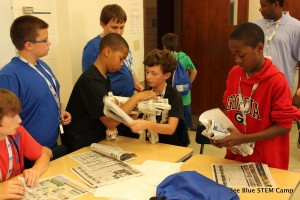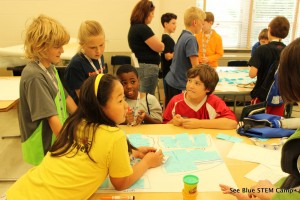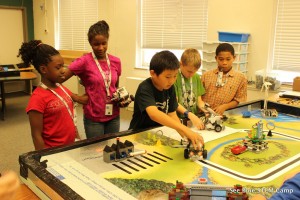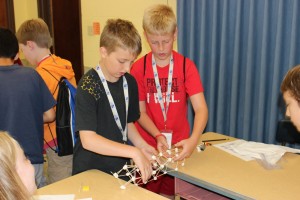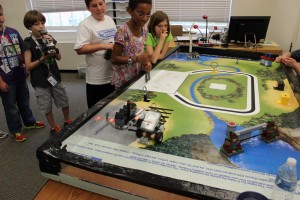What does it take to make a water bottle? How long does it take for a water bottle to decompose? What are companies doing to make their water bottles more environmentally friendly? What EXACTLY does it mean to be sustainable?
These are some of the questions your students had to think about as they worked with Dr. Leslie Vincent, an assistant professor from the Gatton College of Business. Dr. Vincent showed them the power of the media through a variety of pictures and asking the students for their reactions. They learned about sustainability, what makes a product sustainable, what a sustainable future could look like, and even got to design a sustainable product. In order to get their creative juices flowing, the students worked in teams to build a bridge out of newspaper and masking tape. The bridges had to be a certain height and the goal was to hold a gallon jug of water on their bridget for 10 seconds without collapsing. The students had a great time designing and building their bridges and we got the competition on video that we will be posting tonight after the uploads finish. We also were able to capture their innovative product presentations and we’ll be sharing those with you as well. You have some very creative students!!
In robotics, they continued with their sumorobot challenges in preparation for Thursday and Friday’s competitions. The students are really enjoying the different challenges and are really using their engineering practices to problem solve their way through the challenges.
In their words…
- Pizza boxes are recycled boxes.
- How much water and trees and other natural materials are wasted from bad eggs and pizza boxes.
- I learned that billion of eggs are wasted per year because some are cracked before purchased, therefore the whole carton is wasted.
- Many companies are working on sustainable products.
- Cooperation is the key to making a product.
Conversation starters…
- Tell me about the cracked eggs…
- What is sustainability?
- How did you work with your team to build your bridge? How long did your bridge stand? What were some of the challenges in building your bridge? How did you plan your bridge out?
- Tell me about the product you designed. Do you think someone would buy your product? What makes your product sustainable?
Video of the Day… CLICK HERE!
Don’t forget to check out the pictures updated daily for glimpses of what your students are doing!

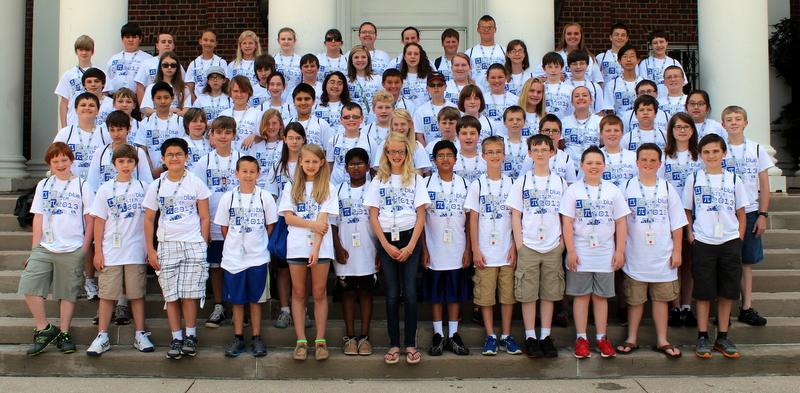
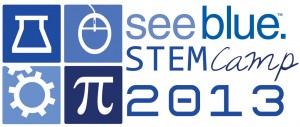 Welcome to the UK See Blue STEM Camp week 2…for the 7th and 8th graders! We have a great group of 72 students this year who were very eager to start up this morning even though we had dreary weather for a Monday!
Welcome to the UK See Blue STEM Camp week 2…for the 7th and 8th graders! We have a great group of 72 students this year who were very eager to start up this morning even though we had dreary weather for a Monday!